Minoan religion, from the island of Crete, is an ever-developing field of study that Sackett’s slides can offer new insights on. The intersection between nature and Minoan religious spaces serves as an compelling examination of the extent that religion influenced Minoan life. Sackett’s slides, along with other external sources, demonstrate the essential connection between nature and religion in the Minoan world as it is shown in interior and exterior spaces and in the actual act of worship. The Minoan world incorporated the natural world into their religious practices and art.
Nature in Frescoes:
Minoan artists brought the natural world into the interior of their religious and political spaces. This is especially prevalent, as seen in the Sackett slides, at the Minoan Palace of Knossos. Serving as the heart of Minoan culture on the island of Crete, the Palace of Knossos has long served as a reflection of overarching Minoan artistic themes. Detailed and stunning frescoes lined the Palace’s walls and they often showed nature motifs and imagery.
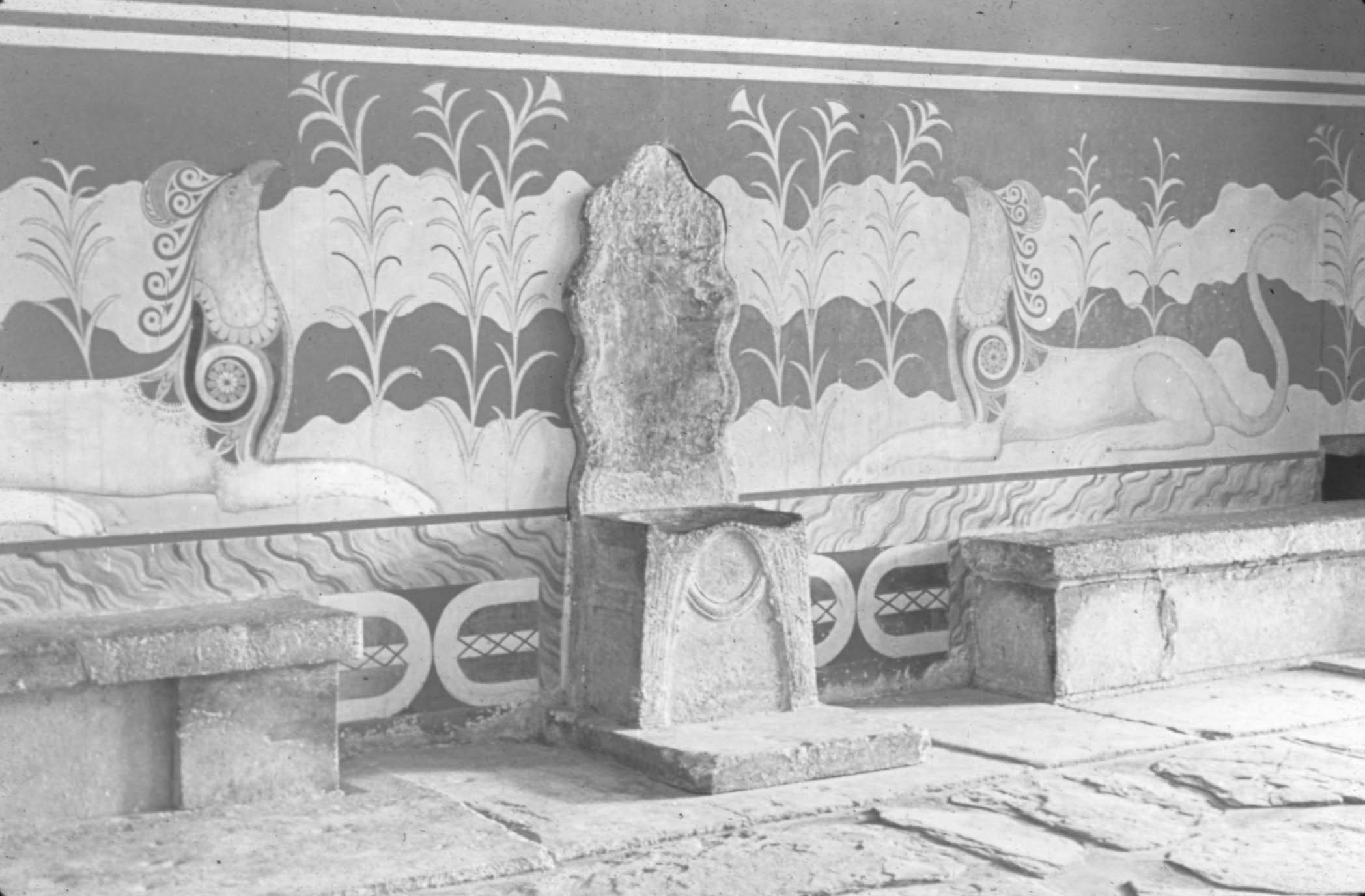
Frescoes depicting vegetation and animals, particularly griffins, were the focal point of the Throne Room at Knossos (Sackett #224, Knossos Throne Room). The griffins are in heraldic position as they flank the throne. Heraldic position was a common artistic way to show reverence to kings, gods and other important figures. Depicting the griffins in the heraldic position shows that Minoan artists considered these mythical animals, and nature as a whole, as symbols of distinction and worthy enough to denote the ruler’s status.
Anne Chapin, in her article about the symbolism and significance in Minoan landscape artwork, argues that in the Knossos Throne Room, “the frescoed griffins…suggest a cultic role for the enthroned individual.” (Chapin 2004, 56) The ritual remains unclear, as it is hard to concretely understand because the Minoans did not document their beliefs and practices, but the frescoes do show the intersection of nature in religious and political artworks. It is believed by some scholars that Minoan artists’ choice of vegetation connects to seasonal changes and religious offerings and represents deities. (Chapin 2004, 48).
The symbolism of the Throne Room fresco’s vegetation is harder to discern. Chapin explains how the depiction shows “floral hybridization” of different plants, reflecting the griffins’ hybridization of different animals. The vegetation, similar to the griffins, could reflect a divine element which would have been understood by its original Minoan audience (Chapin 2004, 56).
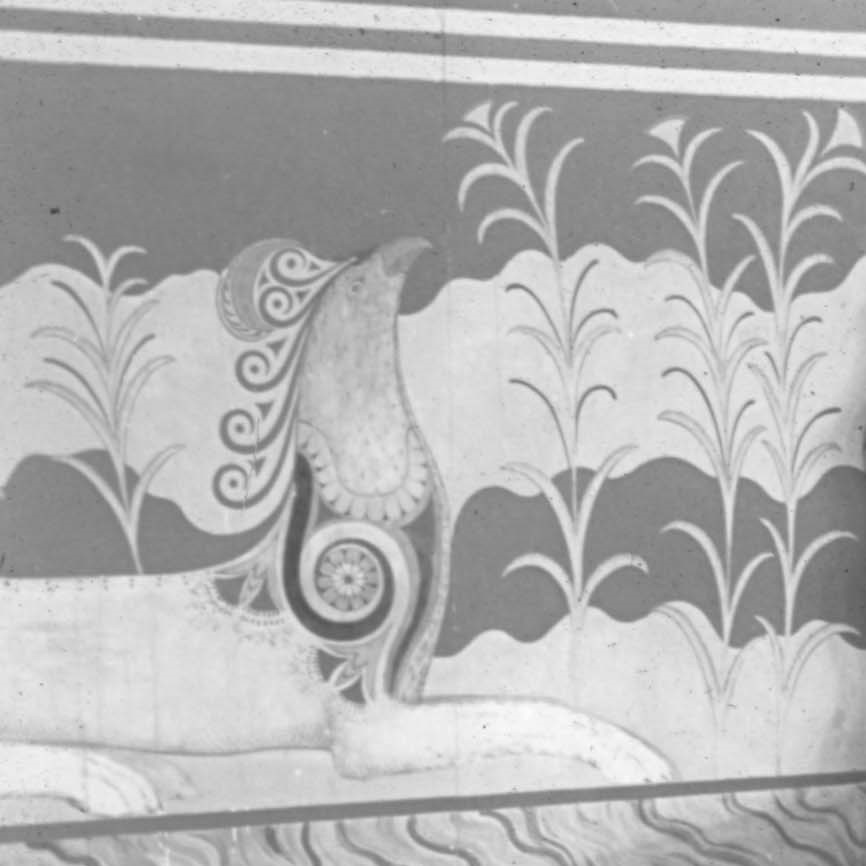
So, although scholars cannot definitely state that the vegetation and griffins in Minoan frescoes showed religious symbolism, the frequency of its depiction in important spaces point to nature as something worthy enough to be visually associated with religion and politics and being symbolic of the divine
Nature and Peak Sanctuaries
The Minoan people went even further with their incorporation of nature into religion by using actual nature as a method of worship. This occurred at Minoan peak sanctuaries that were located across mountain tops in Crete. These peak sanctuaries were designed to host rituals, celebrating and promoting their natural surroundings (Rethemiotakis 2009, 199). But, beyond just a circumstantial appreciation for nature, Minoan worshippers used the literal natural surroundings for their worship. Instead of leaving their offerings in a temple or shrine, Minoan worshippers at peak sanctuaries left clay goddess figurines “secured inside a crevice in the rock, where it had been devoutly placed to remain for eternity on top of the peak” (Rethemiotakis 2009, 199).
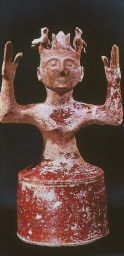
Minoan worshippers held such a deep appreciation for nature that they entrusted their religious devotions to the literal ground. These squat clay figures, such as Minoan Goddess from Gazi Sanctuary, were often positioned in a prayerful position that reflected devotion (Artstor). Their positioning reflects the religious element of these figures and, therefore, that the mountains could serve as a suitable location for divine connection. Minoans, throughout most of their important political and religious sites, valued nature’s ability to bring automatic visibility and prominence (Nixon 2009, 272).
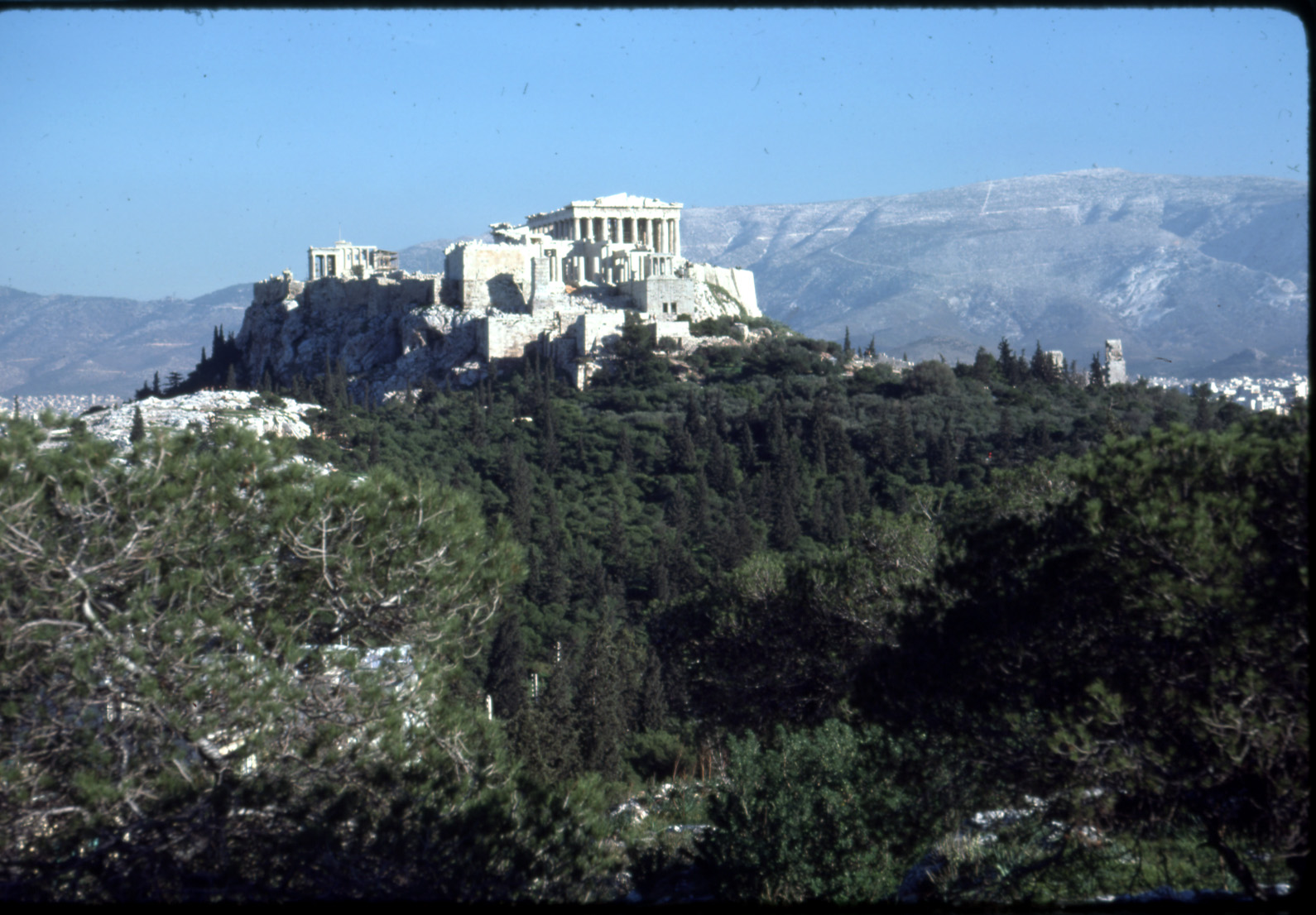
This trend of building structures that utilize nature spread across the ancient world and throughout time. The Acropolis in Athens, originally a Mycenaean Acropolis, is built upon the peak of a mountain (Sackett #164, Acropolis). This location, similar to Minoan sites, celebrates the natural landscape to emphasize its importance and impact.
Nature and the Horns of Consecration

At the Palace of Knossos, nature played a significant and visible role in their exterior worship through the Horns of Consecration. There were many Horns of Consecration at Knossos, and throughout the Minoan world, and their origin and position were deeply connected to nature (Artstor).
Although scholars are not completely sure where the Horns pictured by Sackett were at Knossos, their position would probably have provided a sweeping view of the surrounding landscape of mountains and valleys (Sackett #228, Horns of Consecration and Juktas). It is fair to assume this because, based on other Minoan Horns, most Horns of Consecration were built on roofs or on elevated surfaces (Banou 2008, 35). The Horns’ positional dominance and visual framing points to the natural world and religion’s emphasis on the natural, local environment.
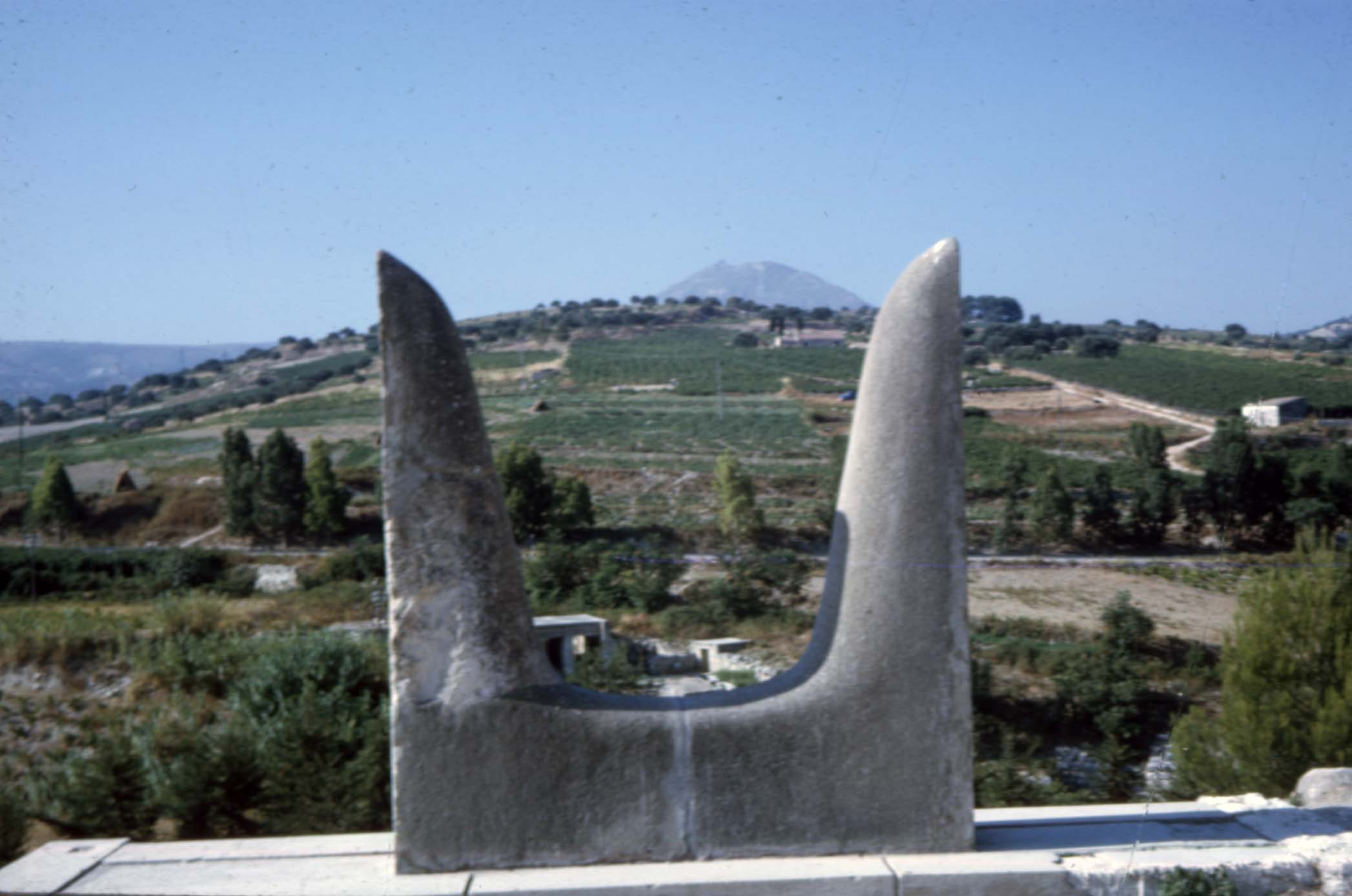
Due to a lack of written records it is difficult to determine the Minoan Horns of Consecration’s origin and meaning, but many scholars believe that the Egyptian symbols for horizon and mountain may have served as inspiration (Banou 2008, 30).
The Egyptian symbols, which mimic the double pronged Horns of Consecration’s appearance, would point to the religious and cultural connections between Minoan Crete and Ancient Egypt. The depiction of the mountains and horizon, furthermore, demonstrates the literal tie between religion and nature through worship. It could also reference peak sanctuaries and their mountaintop locations (Banou 2008, 34). This joining between peak sanctuaries and Horns of Consecration would point to nature’s sanctity in Minoan religion. The natural world serves as both a location for worship and the actual object of worship.
Horn art was used in different spaces, both domestic and public, but their role in shrine worship remained important to Minoan religious practices. (Popham 1970, 194) Showing that Minoan artists brought the peak sanctuaries and Egyptian motifs into people’s homes and personal religion. The entwinement between peak sanctuaries and Horns of Consecration, and the meaning behind the Horns, show the overwhelming importance of nature in Minoan religion as they incorporated it into every avenue of worship. Minoan religion's connection to nature, although not easily proved because of a lack of written documents, is evident in its presence in Minoan interiors, exteriors, and objects of worship. On the island of Crete, many Minoan traditions continue, including the intersection between religion and nature as churches, and other culturally significant buildings, are built in a way that celebrates their surroundings. This continuation shows the importance of understanding the past that continues to inform the present.
Augusta Ambrose '25